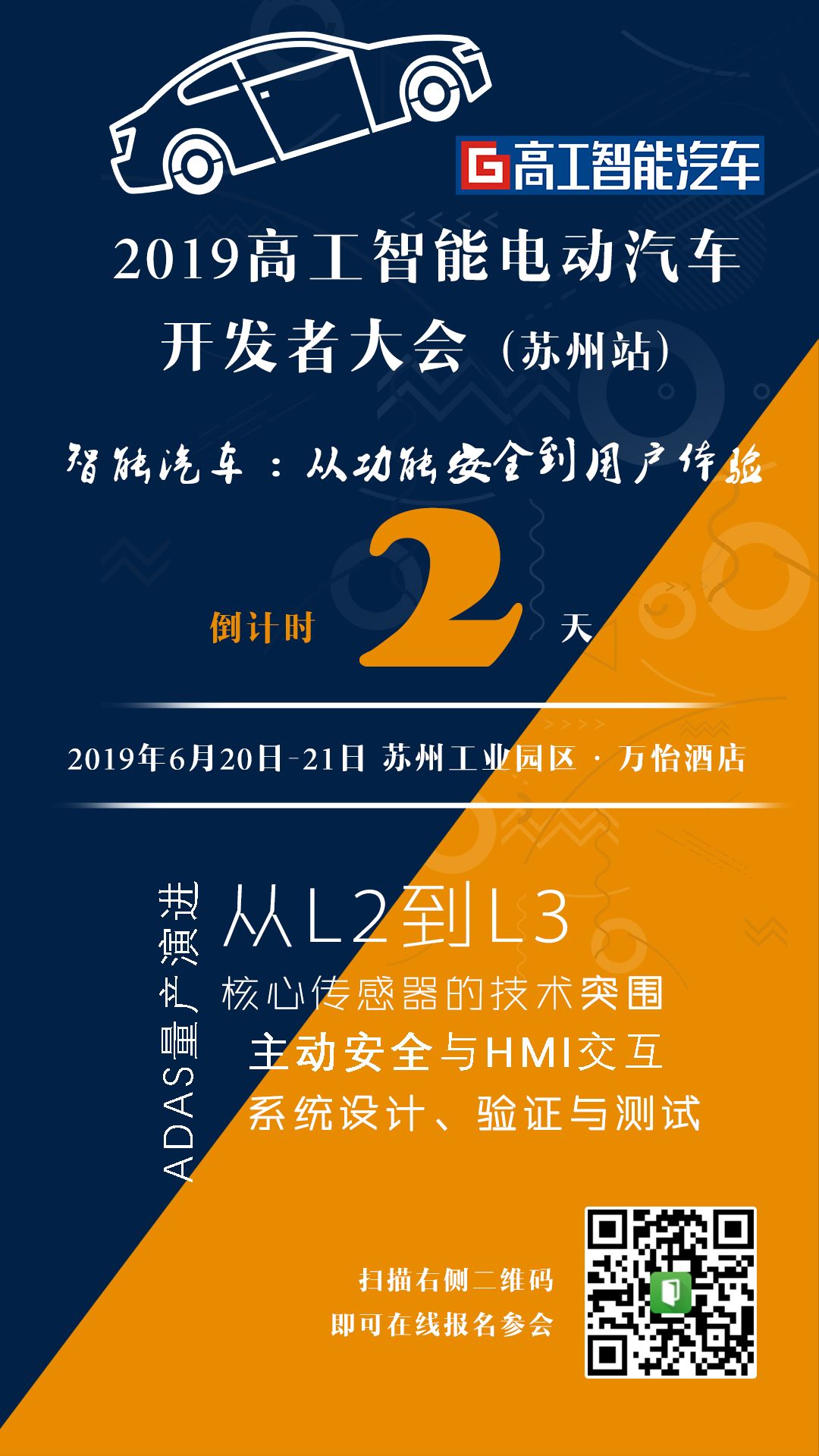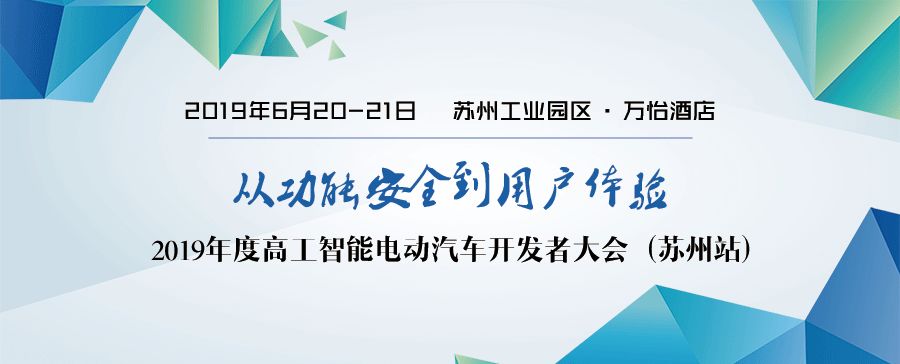
/* Click the bottom to read the original text and register online, deadline June 19 */
Join the Gaogong Intelligent Automotive Industry Group (Autonomous Driving Industry Group 5, Intelligent Connected Cabin Group 3, Intelligent Commercial Vehicle Industry Group) by adding WeChat: 15818636852 and showing your business card, limited to intelligent connected vehicle parts and OEM manufacturers.
The cabin domain controller is one of the core integrated automotive electronic control units in the next generation of automotive electrical and electronic architecture. The controller integrates the relevant hardware of the existing cabin and implements more functions through a large amount of software, including instrument clusters, infotainment systems, and some driver assistance information interactions.
For several years, most global OEM manufacturers and tier-one suppliers have been researching, designing, and gradually mass-producing corresponding domain controllers to replace existing solutions (composed of multiple separate ECUs).
The domain control architecture helps OEMs provide a reusable architecture and software building blocks across platforms. The goal is to reuse software to reduce development time, cost, and risk.
A low-end cabin controller, using a cost-effective SoC, can drive a digital instrument cluster and a very basic infotainment system.
In mid to high-end systems, as the display resolution increases or more displays (such as head-up displays) are added, and additional functions (such as DMS, 3D display, gesture recognition, etc.) are provided, all that needs to be done is to replace the SoC with a more powerful one, while the overall architecture can remain unchanged.
Thus, the cabin controller can support software reuse across configurations and models (“low,” “medium,” “high”) and allow unlocking new features through OTA during the vehicle’s lifecycle.
Additionally, the cabin controller must operate at different levels of functional safety (some even designated to ASIL-B safety level), while the safety architecture is rooted in the hardware features provided by the SoC supplier and must fully utilize hardware security features.
More critically, merging dispersed ECUs also means reducing the potential number of “attack surfaces” to enhance the overall system’s security.
With the increasing demand for intelligent connected vehicles, the demand for integrated cabin electronic devices is also rising. In the past, the traditional cabin cost accounted for about 2% to 3% of the total cost of a car. Now, the cost of more user-friendly, convenient, and safer cabin systems has risen to 11% to 12% of the total cost.
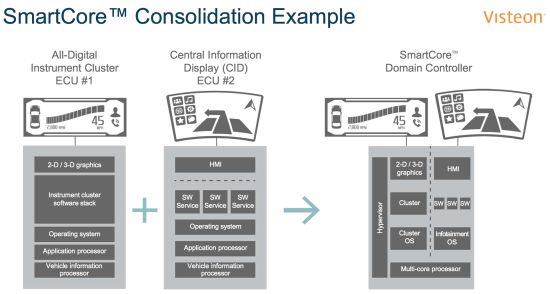
The industry’s first mass-producible cabin domain controller is the SmartCore™ platform launched by Visteon in 2016, which integrates previously independent instrument clusters, infotainment systems, head-up displays (HUD), and other new display devices into a single chip multi-domain controller.
SmartCore™ is also regarded by Visteon as a game-changing technology, allowing different operating systems to run in parallel on a single SoC, merging multiple functions of different safety levels into one system, compared to traditional separate and non-connected infotainment systems, instrument clusters, and other cabin devices and functions.
Through a scalable and flexible framework, the SmartCore™ platform provides different levels of service in terms of information output technology, software applications, and control device types to meet the needs of different vehicle models.
Moreover, network security is achieved through the virtualization of different cores and controlled firewalls. This enables independent functional domains with different ASIL requirements, while future domains can be added to separate and secure operations.
Currently, major tier-one suppliers of next-generation cabin domain controller platforms globally include Visteon, Aptiv, Harman (under Samsung), and Denso, while corresponding SoC suppliers include NXP, Qualcomm, Intel, TI, and Renesas.
One of the biggest differences from previous ECUs is that automotive cabins require more computing power, data transmission capability, and compliance with the industry’s strict functional safety and cybersecurity standards than ever before.
However, as automotive manufacturers gain more control over future intelligent cabins, the traditional process and relationships from chip to tier-one suppliers to OEMs may be disrupted.
In recent years, many automotive manufacturers have also independently laid out the research and development of domain controllers, including the joint venture between SAIC and TTTech last year, as well as several new forces such as Hozon Auto and Leap Motor developing their own.
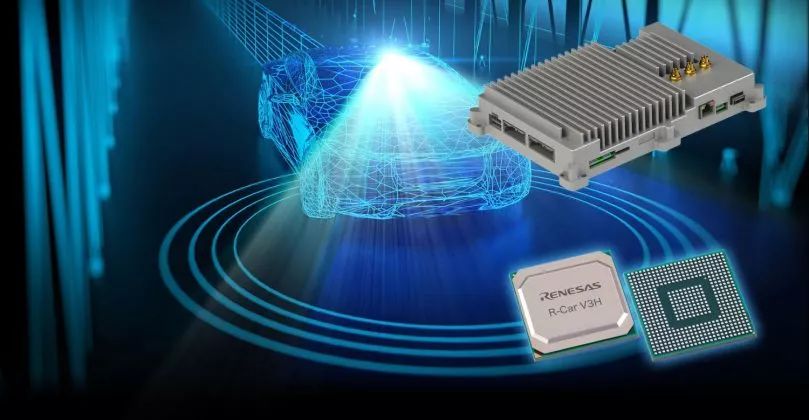
Recently, Renesas announced the launch of a reference solution for cabin domain controllers based on the R-Car M3, providing out-of-the-box development experience for fast and low-cost digital cockpit applications.
This reference solution combines Renesas’ production-oriented modular hardware and software with additional software from other partners to alleviate the burden of system-level design.
“The integrated automotive cockpit is a challenging field, as it integrates so many different cockpit functions, such as multiple operating systems, rich UIs, AR navigation, driver monitoring, etc., requiring strong system-level insight,” said a Renesas representative.
This reference solution provides a complete white-box baseline solution for OEMs and Tier 1s, which can be customized to meet the needs of different applications.
Users can reconfigure, upgrade, or expand the pre-packaged “out-of-the-box” system to create customized solutions that meet their unique needs.
This is equivalent to chip manufacturers directly providing a complete solution to end OEM customers, indirectly reducing the development difficulty of domain controllers.
The entire solution allows for a transparent mix of free/open-source software, Renesas software, and third-party software. OEMs can modify, change, and distribute Renesas code to best meet application design needs.
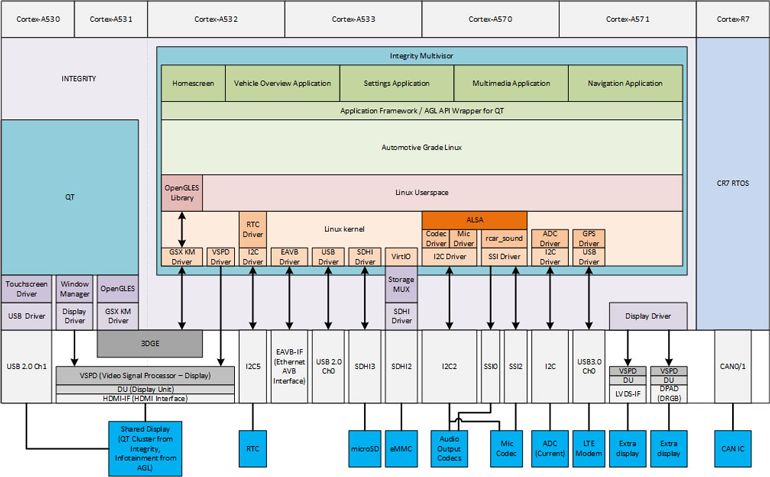
As a source code delivery, this software package enables users to start application design without existing cockpit solutions or accessories. This package represents a complete reference cockpit solution, including BSP and drivers, operating system (OS), virtualization examples, automotive-grade Linux examples, middleware, and a complete application layer.
At the same time, Renesas also provides rapid hardware design references, such as high-speed LPDDR4 layouts, peripheral layouts, design optimizations, and functional testing. This includes PCB schematics, PCB layouts, HW part libraries, board programming, software testing tools, and mechanical housing CAD models.
Who will be the first user of Renesas’ cabin domain controller solution?
Shortly after the release of the above solution, Renesas announced the establishment of an “Automotive Electronics Joint Laboratory” with SAIC Volkswagen to support the development of the next generation of automotive electronic platforms, including software module development and system integration based on digital cockpit.
The goal of both parties is very clear: to jointly develop a hardware and software platform for the Chinese market, starting from the cockpit and vehicle control.
Renesas’ sales fell by 3% last year to 757.3 billion yen (approximately $6.78 billion). Although the group hopes to expand its overseas business, it plans to lay off nearly 1,000 employees, accounting for 5% of the total workforce, by June.
Earlier this year, Renesas arranged for the shutdown of most factories to reduce inventory levels, as the global automotive market, especially in China, has seen a slowdown or even negative growth since last year, leading to a significant decline in demand for its traditional microcontrollers.
Meanwhile, in the market for high-performance computing chips for future vehicles, Renesas faces competition from new entrants such as NVIDIA, Intel, and Xilinx. The potential fierce competition in the future chip market forces traditional “play” to face challenges.
Currently, in the domain controller chip field, NVIDIA, Intel, NXP, Qualcomm, and others occupy leading positions. For Renesas, especially with its historically weak support in the Chinese market, challenges remain.
